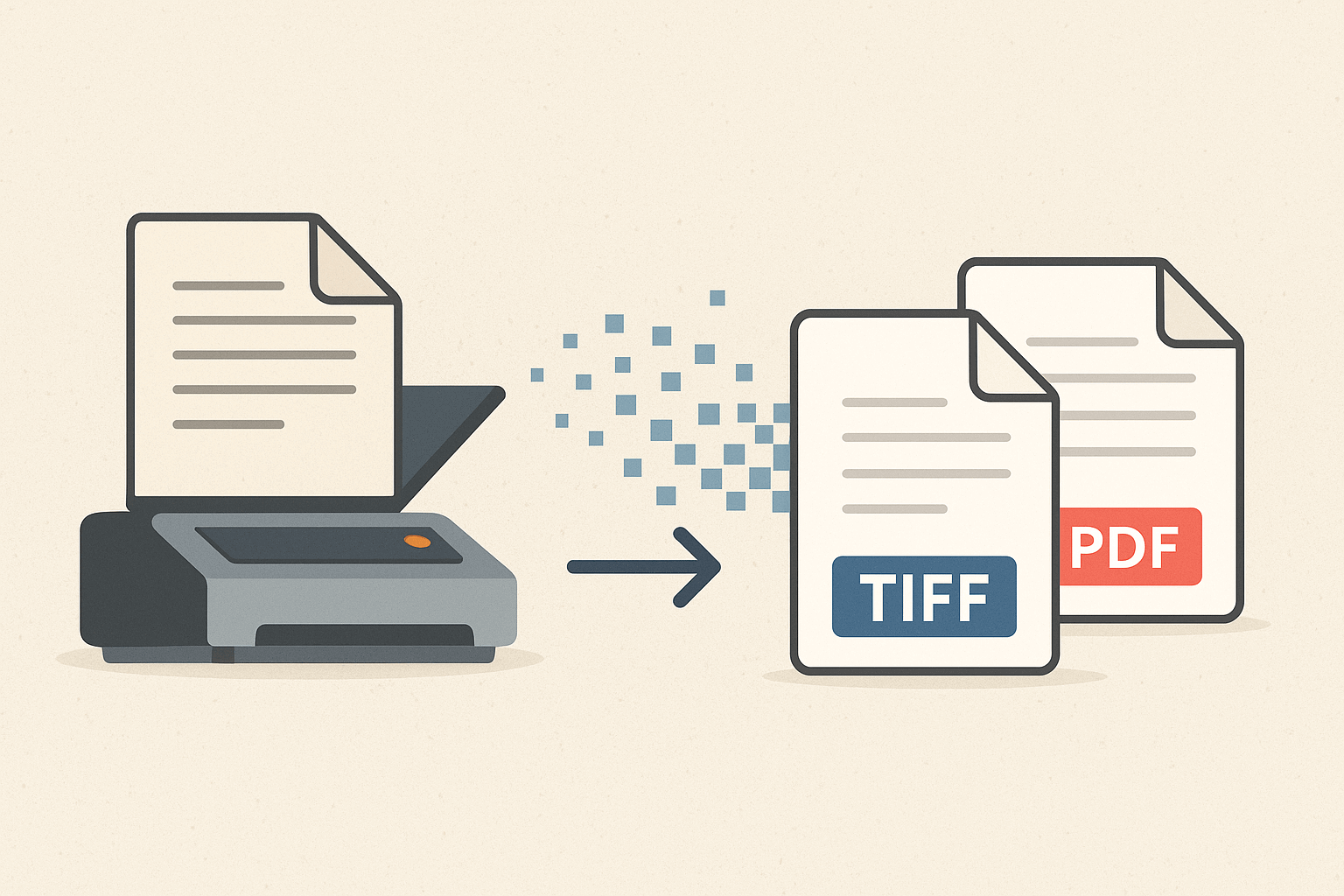Written by
Josh Lemmon
Published on
October 17, 2025

Document scanning with Turn Source enables you to have projects scanned in either TIFF or PDF format. But which choice is the best option for your document scanning needs? This article will explain everything you need to know about the TIFF format vs PDF format so that you can decide which is better for your business.
Document scanning is the process of digitizing paper documents – converting them from paper format to digital images or text through the help of high-speed scanners. Businesses, institutions, and individuals choose to use document scanning services in Los Angeles because it can reduce storage and office supply costs, secure information, and maximize productivity among employees. With document scanning services, files are indexed so that searching for any document is easy and efficient for staff.
TIFF stands for Tag Image File Format. This format is most compatible with images that you plan to edit in the future. TIFF files are also compatible with popular photo editing programs such as PhotoShop. Here are a few examples of when your document should be saved in the TIFF format:
Pros of TIFF Files
Cons of TIFF Files
PDF stands for Portable Document Format and requires the Adobe Acrobat Software. Historically, TIFF files were the go-to option for saving documents in the early 2000s, but PDF files have drastically increased in popularity over the years as a result of their portability. One difference between TIFF and PDF is also that PDF can practically be used on all platforms. Here are some examples of when your document should be saved as a PDF:
Pros of PDF Files
Cons of PDF Files
While there are many differences between a TIFF file vs PDF, there are two similarities between the two formats, which are their searchability and printability.
PDF and TIFF Files are Searchable
Need to find a specific file? You can search for it by name on your computer, whether it’s saved as a PDF or TIFF file. At Turn Source, we use a software process called Optical Character Recognition (OCR) that recognizes typed text in a picture or image. This enables you and your employees to conduct text-related searches within both PDF and TIFF files by simply using CTRL + F and typing in the assigned title or keyword.
PDF and TIFF Files can be Printed
When it comes to TIFF vs PDF for printing, both formats can be easily printed and retain their quality. To find out which format will produce the best quality print-job, we recommend speaking with a Turn Source team member about your specific documents.
Readability
When it comes to the readability of PDF vs TIFF, PDFs are much easier to view than TIFFs and also allow for commenting within the PDF and printing from any device. TIFFs do not offer the same level of flexibility.
Security Features
Your PDF files can be password-protected and assigned specific viewing and printing access. If you decide later you would like to remove specific document access, you can easily do so with a PDF. With TIFF files, while you have the option of disallowing access to specific viewers, the security permissions are by far more limited than PDFs. And with TIFF files, once you share access with another user, it is very difficult to revoke that access.
Archiving
PDF was designed with archiving in mind, specifically long-term archiving. With PDF files, you can feel assured that the readability (and ability to view the documents) will be available for an infinite amount of years to come. Major publications and libraries utilize PDF files for this reason. TIFF file formatting is no longer as popular of a selection as PDF and therefore, fewer publications and businesses are choosing to archive in this format
Choosing to have your files saved as a PDF vs TIFF ultimately comes down to the type of documents you have that need to be digitized - If you are a photographer and have documents that contain images (especially ones you will want to edit without compromising image quality) then the TIFF format is most likely the best option for you. On the other hand, if you have documents containing mainly text and you need to archive these images, as well as have the option for flexible security access permissions, then the PDF format is the most appropriate choice.
At Turn Source, our team of experts can answer any questions you have about PDF and TIFF formats and help you make a decision on which format is best for your needs.
Effortlessly convert your paper documents into a usable digital format with Turn Source Imaging. As southern California’s leading document scanning service, we offer convenience, efficiency, and savings to individuals, businesses, and institutions. We’ll create a tailored plan that meets your budget, turnaround time, and expectations.
Ready to get started with document
scanning and document imaging?